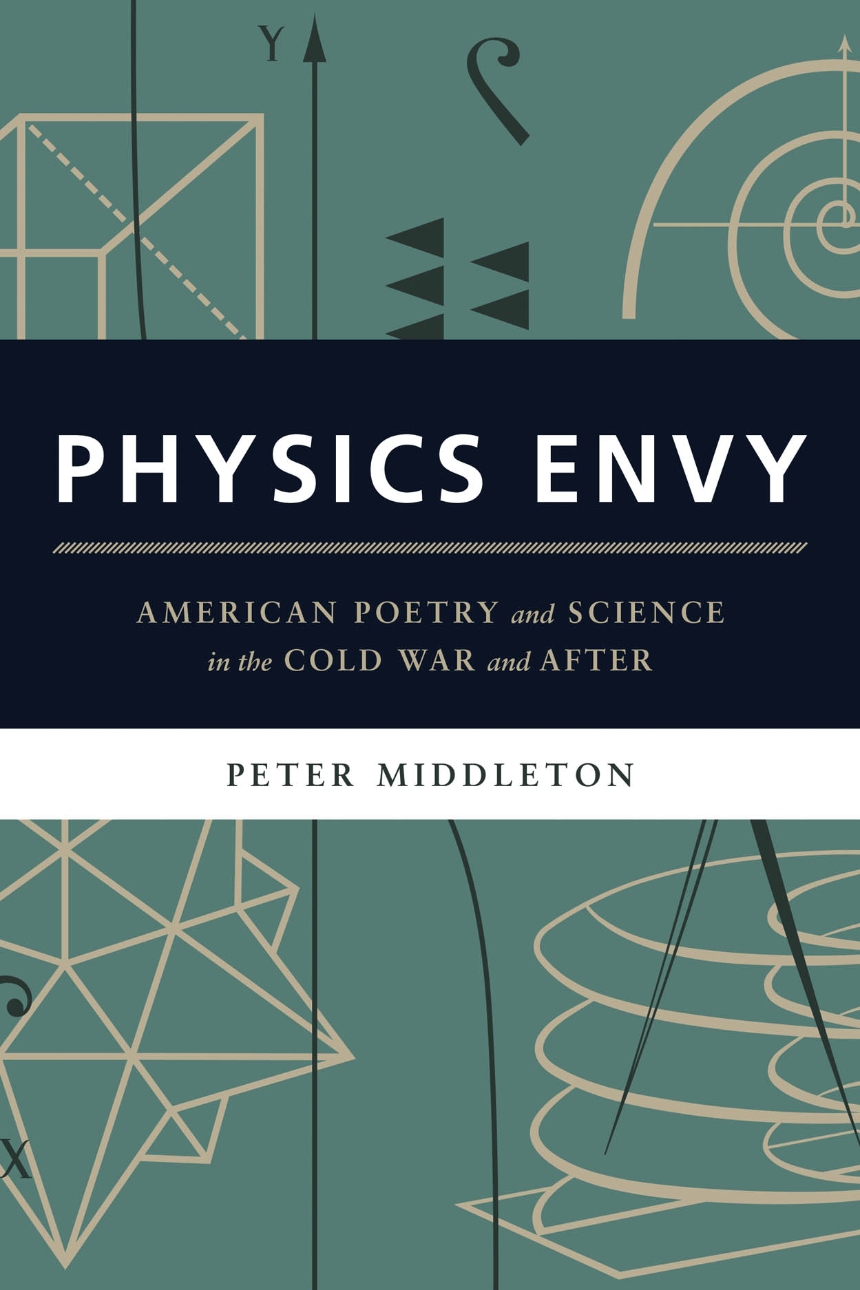Physics Envy
American Poetry and Science in the Cold War and After
At the close of the Second World War, modernist poets found themselves in an increasingly scientific world, where natural and social sciences claimed exclusive rights to knowledge of both matter and mind. Following the overthrow of the Newtonian worldview and the recent, shocking displays of the power of the atom, physics led the way, with other disciplines often turning to the methods and discoveries of physics for inspiration.
In Physics Envy, Peter Middleton examines the influence of science, particularly physics, on American poetry since World War II. He focuses on such diverse poets as Charles Olson, Muriel Rukeyser, Amiri Baraka, and Rae Armantrout, among others, revealing how the methods and language of contemporary natural and social sciences—and even the discourse of the leading popular science magazine Scientific American—shaped their work. The relationship, at times, extended in the other direction as well: leading physicists such as Robert Oppenheimer, Werner Heisenberg, and Erwin Schrödinger were interested in whether poetry might help them explain the strangeness of the new, quantum world. Physics Envy is a history of science and poetry that shows how ultimately each serves to illuminate the other in its quest for the true nature of things.
In Physics Envy, Peter Middleton examines the influence of science, particularly physics, on American poetry since World War II. He focuses on such diverse poets as Charles Olson, Muriel Rukeyser, Amiri Baraka, and Rae Armantrout, among others, revealing how the methods and language of contemporary natural and social sciences—and even the discourse of the leading popular science magazine Scientific American—shaped their work. The relationship, at times, extended in the other direction as well: leading physicists such as Robert Oppenheimer, Werner Heisenberg, and Erwin Schrödinger were interested in whether poetry might help them explain the strangeness of the new, quantum world. Physics Envy is a history of science and poetry that shows how ultimately each serves to illuminate the other in its quest for the true nature of things.
272 pages | 1 line drawing | 6 x 9 | © 2015
History: American History
Literature and Literary Criticism: American and Canadian Literature
Physical Sciences: History and Philosophy of Physical Sciences
Reviews
Table of Contents
Acknowledgments
Introduction
Part I Poetry and Science
1 The Poetic Universe: Mapping Interrelations between Modern American Poetry and the Sciences
2 What the Physicist Said to the Poet: How Physicists Used the Ideal of Poetry to Talk about Uncertainty
Part II Midcentury
3 Projective Verse: Fields in Science and Poetics at Midcentury
4 Conceptual Schemes: The Midcentury Poetics of Muriel Rukeyser and Charles Olson
5 Stories, Geometries, and Angels: Muriel Rukeyser, Charles Olson, and Robert Duncan in the 1950s
Part III Scientific Americans
6 Scientific American Poetry: Rae Armantrout, Jackson Mac Low, and Robert Duncan
7 Defying Social Science: George Oppen and Amiri Baraka
Coda
Notes
Index
Introduction
Part I Poetry and Science
1 The Poetic Universe: Mapping Interrelations between Modern American Poetry and the Sciences
2 What the Physicist Said to the Poet: How Physicists Used the Ideal of Poetry to Talk about Uncertainty
Part II Midcentury
3 Projective Verse: Fields in Science and Poetics at Midcentury
4 Conceptual Schemes: The Midcentury Poetics of Muriel Rukeyser and Charles Olson
5 Stories, Geometries, and Angels: Muriel Rukeyser, Charles Olson, and Robert Duncan in the 1950s
Part III Scientific Americans
6 Scientific American Poetry: Rae Armantrout, Jackson Mac Low, and Robert Duncan
7 Defying Social Science: George Oppen and Amiri Baraka
Coda
Notes
Index
